Aero wheels are a hot topic in cycling, promising speed gains and efficiency for riders looking to shave seconds off their times. But do they actually live up to the hype, or are they just flashy accessories for your bike? Let’s break down the science, benefits, and trade-offs of aero wheels to help you decide if they’re worth the investment.
The Science of Speed
Aero wheels are designed to reduce aerodynamic drag, which is the largest force slowing you down at speeds above 15 mph (24 km/h). By using deeper rims (typically 40-90mm) and optimized profiles, these wheels slice through the air more efficiently than traditional box-section or shallow rims.
Studies suggest that upgrading to aero wheels can save 15-30 watts of power at race speeds—equivalent to gaining a 1-2 mph boost without pedaling harder. For competitive cyclists, that’s often the difference between podium placement and the middle of the pack.
But What About Real-World Riding?
While the wind tunnel doesn't lie, real-world conditions add complexity. Aero wheels excel on flat roads, during solo breakaways, or in time trials where maintaining speed is critical. However, their benefits diminish on steep climbs (where weight matters more) or in gusty crosswinds, where deeper rims can feel twitchy. If you’re a weekend warrior or prioritize climbing over flat-out speed, the gains might not justify the cost.
Alloy vs. Carbon
Many riders assume aero wheels must be carbon, but alloy options like Trifox’s Alloy Road Wheels offer a compelling middle ground. These wheels blend durability, affordability, and a semi-aero profile to deliver noticeable performance improvements without the fragility or premium price tag of full-carbon setups. For riders who want a balance of aero efficiency and everyday reliability, alloy wheels are a smart choice—especially if you’re not chasing marginal gains in a race.
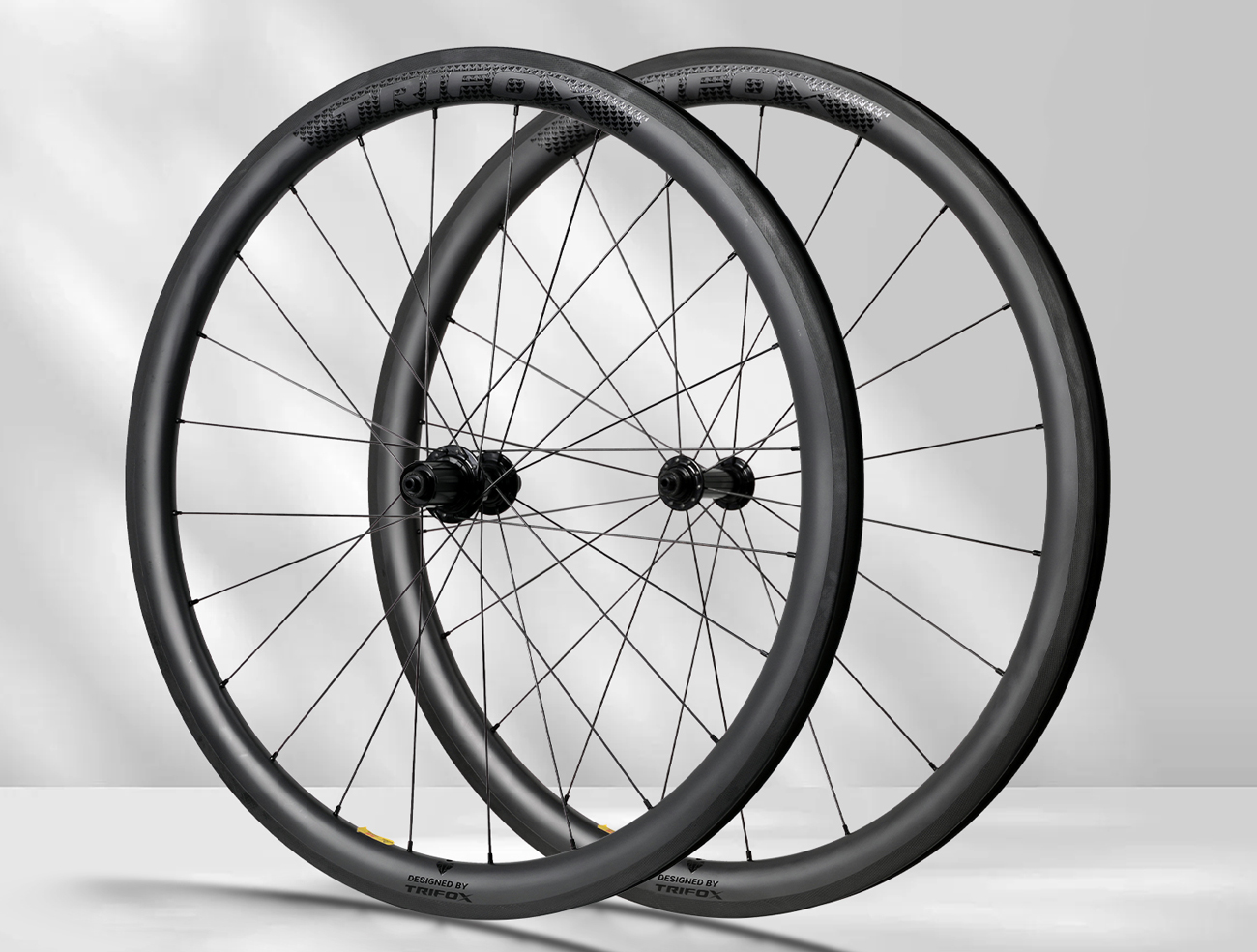
The Verdict
Aero wheels do make a difference—if speed is your priority. For racers, triathletes, or riders focused on flat-terrain performance, the aerodynamic edge is undeniable. However, for casual cyclists or those on a budget, the benefits may feel subtle compared to the cost. Consider your riding style, terrain, and goals before upgrading. And remember: No wheel can replace the power of consistent training!
Ready to explore your options? Check out Trifox’s alloy road wheels for a practical, high-quality upgrade that won’t break the bank.

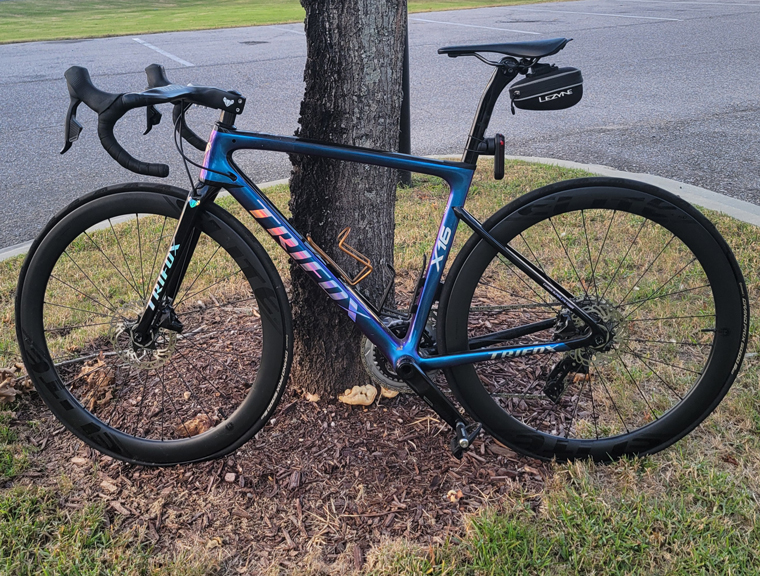
The question of how many gears a road bike “should” have doesn’t have a one-size-fits-all answer. From vintage 5-speed setups to modern 12-speed electronic groupsets, gear counts have evolved dramatically. The right number depends on your riding style, terrain, and budget. Let’s break down the factors to help you find your ideal setup.
The Evolution of Speed
Road bikes once topped out at 10 speeds, but today’s drivetrains offer up to 12 or even 13 cogs. More gears mean smaller jumps between ratios, letting you maintain optimal cadence (pedaling rhythm) on rolling terrain or long climbs. However, more isn’t always better—complexity, weight, and cost increase with each added cog.
Key Considerations
1. Rider Needs: Competitive cyclists often prefer 11- or 12-speed systems for seamless shifting under load. Casual riders or commuters might prioritize simplicity with 8-10 speeds.
2. Terrain: Hilly routes demand wider gear ranges. A compact chainset paired with an 11-34T cassette (common in 11-speed setups) offers climbing ease without sacrificing top-end speed.
3. Maintenance: More gears mean tighter tolerances. A 9- or 10-speed drivetrain is easier to adjust and cheaper to replace.
The Sweet Spot: 11-Speed Dominance
For most road riders, 11-speed strikes a balance. It provides ample range (e.g., 11-30T or 11-34T cassettes) and smooth transitions between gears. Brands like Shimano 105, SRAM Rival, and Campagnolo Centaur offer reliable mid-tier 11-speed groupsets that blend performance and affordability.
When Less is More
Beginners or budget-conscious riders might opt for 8-10 speeds. These systems are robust, cost-effective, and sufficient for flat to moderate terrain. Plus, wider gear spacing can reduce shifting frequency, which is less mentally taxing on long rides.
Cutting-Edge: 12-Speed and Beyond
High-end 12-speed groupsets (Shimano Dura-Ace, SRAM Red) cater to racers and tech enthusiasts. Hyper-precise shifting and expanded gear ranges maximize efficiency, but they come at a premium price—and not all frames/wheels are compatible.
Trifox's Approach: Versatility Meets Value
Trifox road bikes, offer customizable builds to match your gear preferences. Whether you prioritize the crispness of 11-speed Shimano or the simplicity of a 9-speed commuter setup, their ultralight carbon frames adapt to your needs without compromising durability.
Final Shift
Your ideal gear count hinges on where and how you ride. More speeds deliver precision, but simplicity has its perks. Test different setups if possible, and remember: the best drivetrain is the one that keeps you pedaling—and smiling—mile after mile.
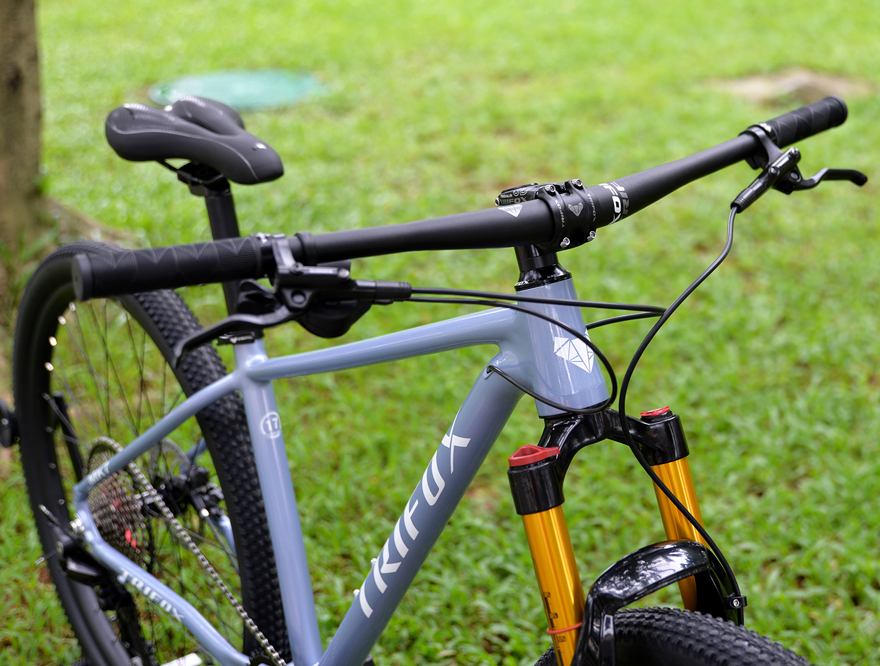
When it comes to mountain biking, finding the right balance between cost and performance can feel like a never-ending quest. Enter the 29er alloy hardtail frame—a design that promises the ruggedness needed for aggressive trails without breaking the bank. But does it live up to the hype?
THE CASE FOR ALLOY: AFFORDABILITY MEETS PERFORMANCE
Carbon fiber often steals the spotlight for its featherweight appeal, but alloy frames like the MK7 offer a compelling alternative. Aluminum provides a robust foundation at a fraction of the cost, making it ideal for riders who prioritize value.
The MK7's ultralight construction shaves weight without compromising strength, bridging the gap between budget-friendly and high-performance. For beginners or seasoned riders watching their wallets, alloy delivers resilience where carbon might falter—think rock strikes, crashes, or rough trail abuse.
TRAIL-READY TOUGHNESS: BUILT TO LAST
Durability is where alloy truly shines. The MK7’s hydroformed tubing reinforces critical stress points, ensuring the frame withstands repeated punishment from roots, drops, and technical climbs. Pair this with the modern 148mm Boost rear spacing, which increases wheel stiffness and compatibility with wider hubs, and you’ve got a setup that combats flex during hard cornering and accelerates efficiently. This isn’t a frame that coddles; it’s built to push limits, making it a reliable partner for everything from flowy singletrack to gnarly descents.
29ER WHEELS: THE TRAIL-SMOOTHING ADVANTAGE
The 29-inch wheels paired with this hardtail design are a game-changer. Their larger diameter rolls over obstacles with ease, maintaining momentum on climbs and reducing fatigue over long rides. While hardtails lack rear suspension, the MK7’s rigid rear triangle ensures direct power transfer, letting you tackle climbs with urgency. The 29er’s stability also complements the frame’s durability, creating a bike that feels planted and predictable when the trail gets rowdy.
HARDTAIL SIMPLICITY: LESS MAINTENANCE, MORE RIDING
Hardtails eliminate the complexity (and cost) of rear suspension, offering a lighter, more responsive ride. The MK7 leans into this ethos, with a clean design that’s easier to maintain and repair. Fewer moving parts mean fewer headaches—perfect for riders who want to spend less time tuning and more time riding.

VERDICT: THE BEST OF BOTH WORLDS?
So, is a 29er alloy hardtail frame the perfect blend of affordability and durability? For most riders, the answer leans yes. The Trifox MK7 exemplifies this balance, offering a lightweight yet tough platform that thrives on diverse terrain. It's a smart choice for those seeking a capable, low-maintenance bike that won't empty their wallet.
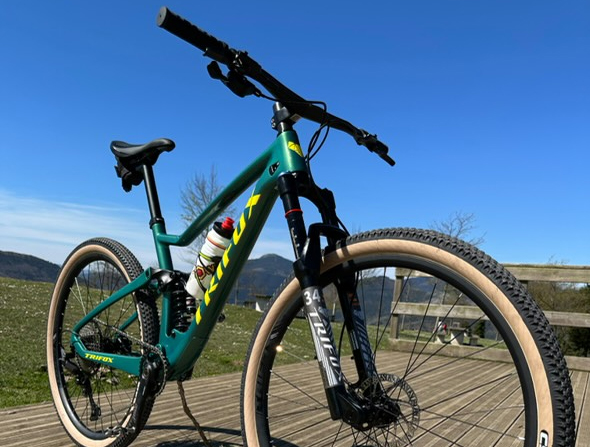
Mountain biking thrives on adrenaline, but as trails get gnarlier, your hardtail might struggle. So, when is it time to switch to a full suspension bike?
1. Your Terrain Demands It
If you’re tackling rocky descents, root-covered paths, or technical drops, a full suspension bike absorbs shocks better, keeping you in control. TrifoxBike’s designs, like the Trifox Full Suspension MTB, feature optimized rear travel to smooth out rough trails, reducing fatigue and improving traction.
2. Your Riding Style Gets Aggressive
Downhill shredders, jump enthusiasts, and enduro racers benefit from dual suspension. The added stability at high speeds and landings protects your body and bike. TrifoxBike’s frames balance lightweight durability with responsive suspension, ideal for pushing limits.
3. You Ride Frequently
Regular riders logging long hours need comfort. Full suspension reduces joint strain, letting you ride longer. TrifoxBike integrates ergonomic designs without sacrificing efficiency, making their bikes a smart choice for daily adventurers.
4. Your Skills Outgrow Your Bike
Advanced riders tackling steeper lines or faster corners need bikes that match their progression. Full suspension offers confidence to tackle technical features. TrifoxBike’s models support skill growth with precision handling and adjustable setups.
5. Budget Allows for Investment
While pricier than hardtails, TrifoxBike delivers high-value builds with premium components like air shocks and durable pivots. If your riding justifies the cost, it’s a worthy upgrade.
6. You Prioritize Traction
Wet, loose, or uneven terrain demands grip. Full suspension maintains tire contact, enhancing control. Pair this with TrifoxBike’s grippy tire compatibility, and you’ve got a trail-eating machine.
7. Maintenance Doesn’t Intimidate You
Full suspension requires more upkeep, but TrifoxBike’s reliable seals and accessible pivot points simplify care, ensuring longevity.
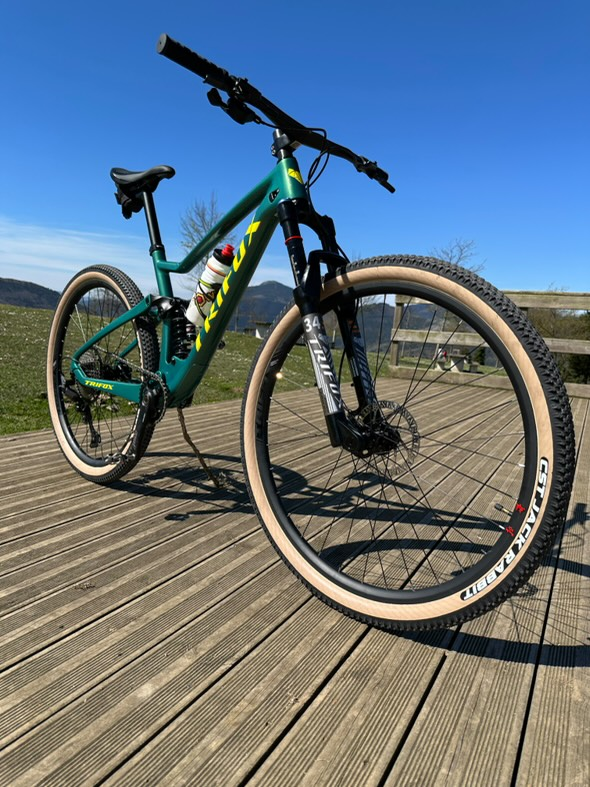
Upgrade if your trails, style, or ambition demand more. TrifoxBike’s full suspension range blends performance and value, ready to elevate your ride.
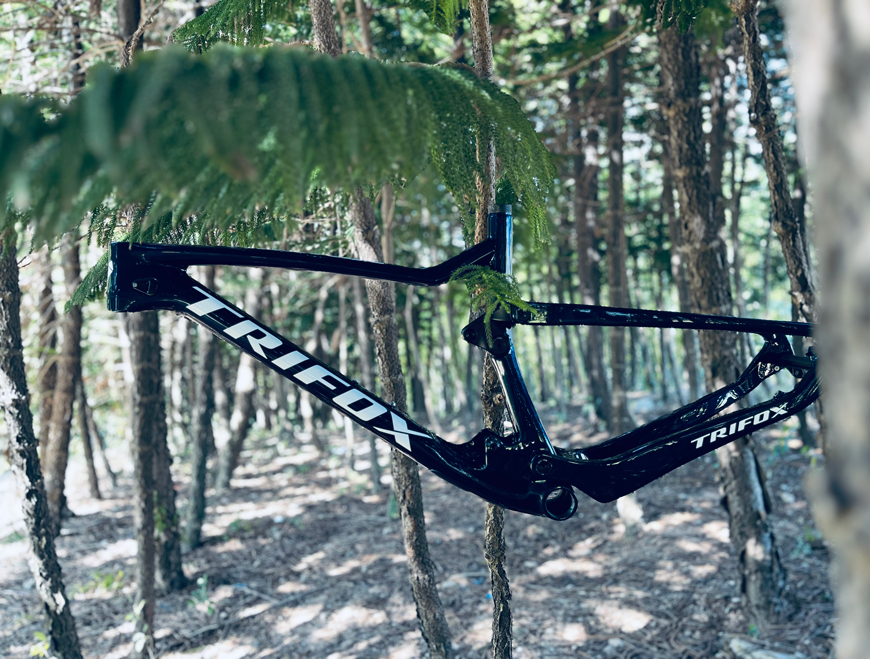
The age-old debate between hardtail (front suspension only) and full-suspension mountain bikes boils down to one question: What kind of rider are you? Let’s dissect the pros, cons, and ideal use cases for both setups to help you decide—and explore how brands like Trifox cater to diverse preferences.
Hardtail (Without Rear Suspension)
Pros:
- Lightweight: Fewer parts mean easier climbing and faster acceleration.
- Lower Cost: Affordable to buy and maintain (no rear shock or pivot bearings).
- Efficiency: Direct power transfer makes pedaling feel responsive, ideal for smooth trails or XC racing.
- Simplicity: Less maintenance and easier DIY repairs.
Cons:
- Rough Ride: Rear impacts are absorbed solely by your legs, leading to fatigue on technical terrain.
- Traction Limits: Less control on loose or rocky descents.
Full-Suspension
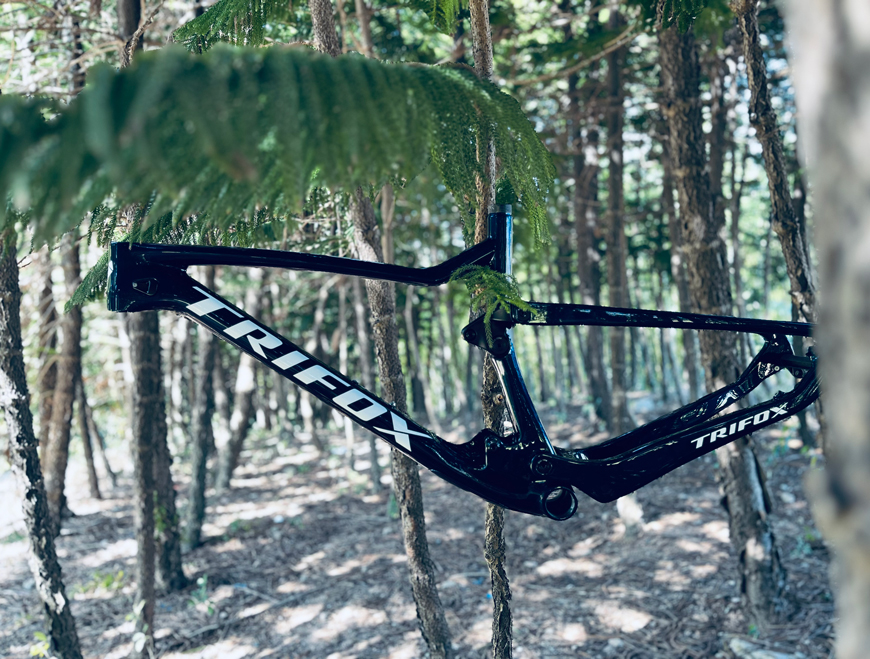
Pros:
- Comfort & Control: Rear shocks smooth out bumps, reducing fatigue and improving grip on chunky trails.
- Versatility: Confidently tackle downhill, enduro, or all-day adventures.
- Speed: Maintain momentum through rough sections.
Cons:
- Weight & Cost: Heavier frame and higher upfront/maintenance costs.
- Complexity: More moving parts mean more potential for mechanical issues.
Who Should Ride What?
- Choose a Hardtail If: You prioritize budget-friendly efficiency, ride smoother trails, or love climbing. Models like Trifox’s hardtails excel here, blending lightweight frames with trail-ready geometry.
- Choose Full-Suspension If: You crave technical descents, endurance rides, or park laps. Trifox’s full-suspension bikes offer balanced travel and durability for aggressive terrain.
Key Considerations
1. Terrain: Rocks, roots, and drops? Full-suspension shines. Pavement or flow trails? Save weight with a hardtail.
2. Budget: Hardtails cost less upfront and long-term.
3. Skill Level: Beginners may appreciate a hardtail’s simplicity; advanced riders often leverage full-squish capabilities.
There's no “better” option—only what's better for you. Hardtails reward efficiency and simplicity, while full-suspension bikes unlock technical prowess and comfort. Test both if possible, and consider Trifox’s range to match your riding style. Whether you're chasing KOMs or sending drops, the right suspension setup ensures every ride feels like freedom.
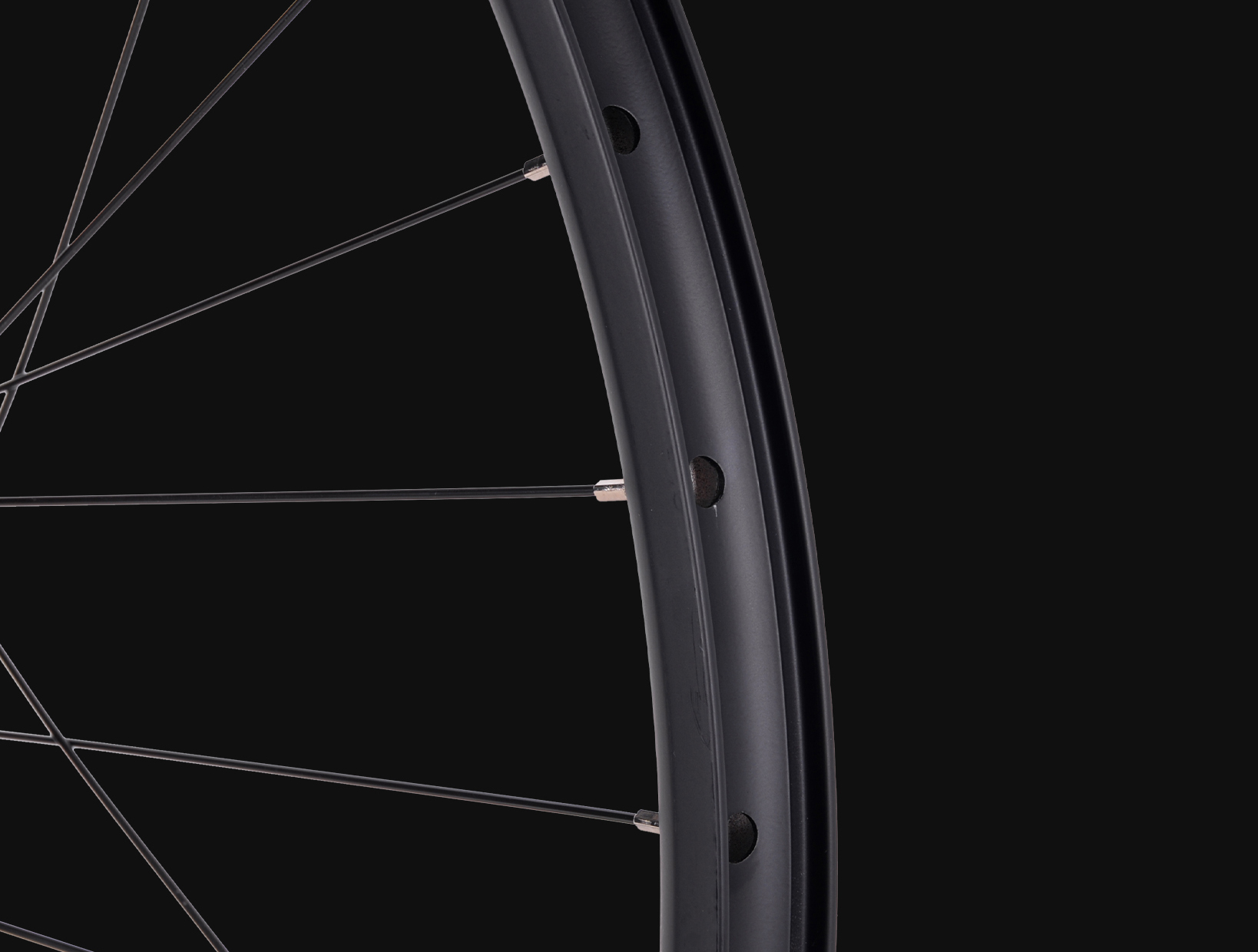
Choosing the right mountain bike wheel size—26", 27.5", or 29"—can feel overwhelming, but understanding their strengths will help you pick the perfect match for your riding style.
26-Inch Wheels: The Classic Choice
Once the standard, 26" wheels are nimble and lightweight, offering quick acceleration and agility for technical trails or dirt jumps. They’re favored by freeriders and those prioritizing maneuverability over speed. However, they’ve lost ground to larger sizes due to reduced rollover capability on rough terrain.
27.5-Inch Wheels: The Balanced Performer
27.5" (650B) wheels strike a middle ground. They roll faster than 26" wheels, tackle obstacles more smoothly, and remain agile enough for tight corners and playful riding. This size suits trail and enduro riders who want versatility—ideal for everything from climbs to descents.
29-Inch Wheels: Speed & Stability
29ers dominate cross-country and endurance riding. Their larger diameter rolls over roots and rocks effortlessly, maintaining momentum on climbs and rough descents. While less nimble in tight spaces, they’re faster on flow trails and favored by taller riders seeking stability.
Mixed Wheel Sizes: The “Mullet” Setup
Some riders mix a 29" front wheel (for stability) with a 27.5" rear (for agility). This hybrid boosts confidence on descents while keeping the rear end lively—popular in downhill and enduro disciplines.
Trifox MTB Wheels: Built for Choice
Whether you prioritize speed, agility, or adaptability, Trifox’s MTB wheels offer robust carbon options across sizes. Their 29" models excel in efficiency, while 27.5" wheels cater to technical riders. Lightweight yet durable, they’re designed to enhance your preferred riding style.
Who Should Ride What?
26": Jumpers, dirt riders, or those on older frames.
27.5": Trail/enduro riders seeking a playful, all-rounder feel.
29": XC racers, endurance riders, or anyone prioritizing speed and stability.
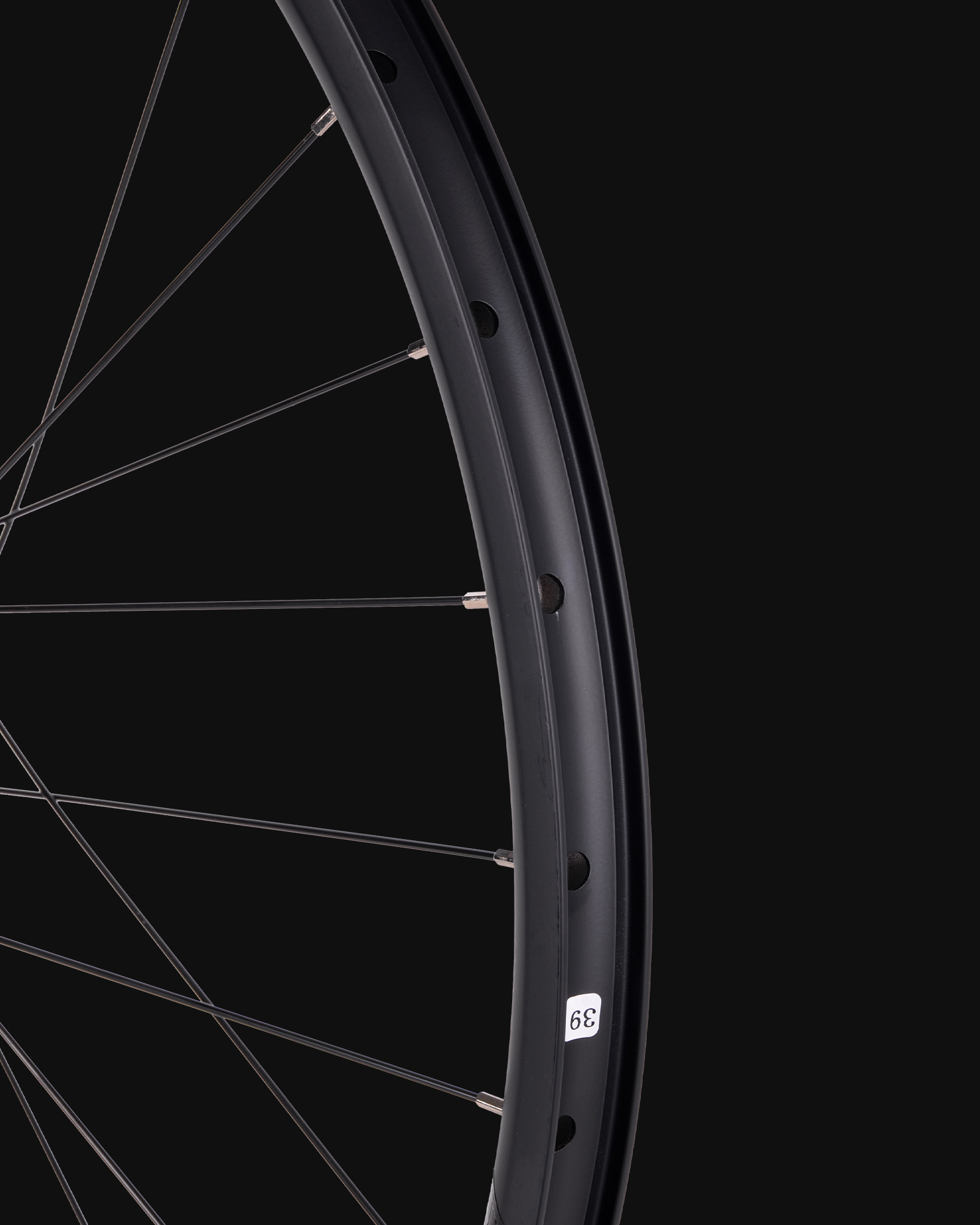
There's no universal “best” wheel size—it depends on your terrain, height, and riding goals. Test different sizes if possible, and consider Trifox’s high-performance wheels to optimize your setup. Whether you’re carving singletrack or racing uphill, the right wheels elevate every ride.

Mountain biking technology constantly evolves, and one debate among riders is whether to choose a frame with full internal cable routing.
What Is Full Internal Cable Routing?
Trifox hides brake and derailleur cables (or housing) inside the frame, creating a clean, streamlined appearance. Unlike traditional setups where cables run externally, Trifox routes them through the frame’s tubes, often exiting near components like the stem or rear derailleur.
Pros of Trifox
Aesthetics & Aerodynamics: A clutter-free frame looks sleek and may reduce drag marginally, though this matters more for racers.
Protection: Cables are shielded from mud, rocks, and trail debris, reducing wear and corrosion.
Durability: Less exposure means fewer snags on branches or accidental tugs during technical rides.
The Trifox SDY21 Frame: A Case Study
The Trifox SDY21 exemplifies Trifox done right. This lightweight carbon hardtail pairs Boost spacing stiffness with internal routing that’s thoughtfully designed. The cables enter through the headtube, minimizing friction points, and the carbon construction ensures durability without weight penalties. For riders prioritizing a clean build, it’s a compelling option.
Who Should Consider Trifox?
Weight-Weenies & Racers: The SDY21's minimalistic design shaves grams while maintaining performance.
Low-Maintenance Riders: If you prefer professional tune-ups and value long-term cable health, Trifox suits you.
Aesthetic Enthusiasts: Love a bike that looks as sharp as it rides? Internal routing delivers.
Who Should Skip It?
DIY Mechanics: If you love tweaking your bike trailside, external routing offers easier access.
Budget-Conscious Riders: Trifox frames often cost more, and installation might require extra tools.

Full internal cable routing isn't a must-have, but it’s a worthy upgrade for riders valuing aesthetics, protection, and modern design. The Trifox SDY21 frame balances these perks with practical engineering, making it ideal for those ready to embrace Trifox’s trade-offs. Before deciding, weigh your maintenance habits, budget, and riding style—because the best frame is the one that matches your trail needs.
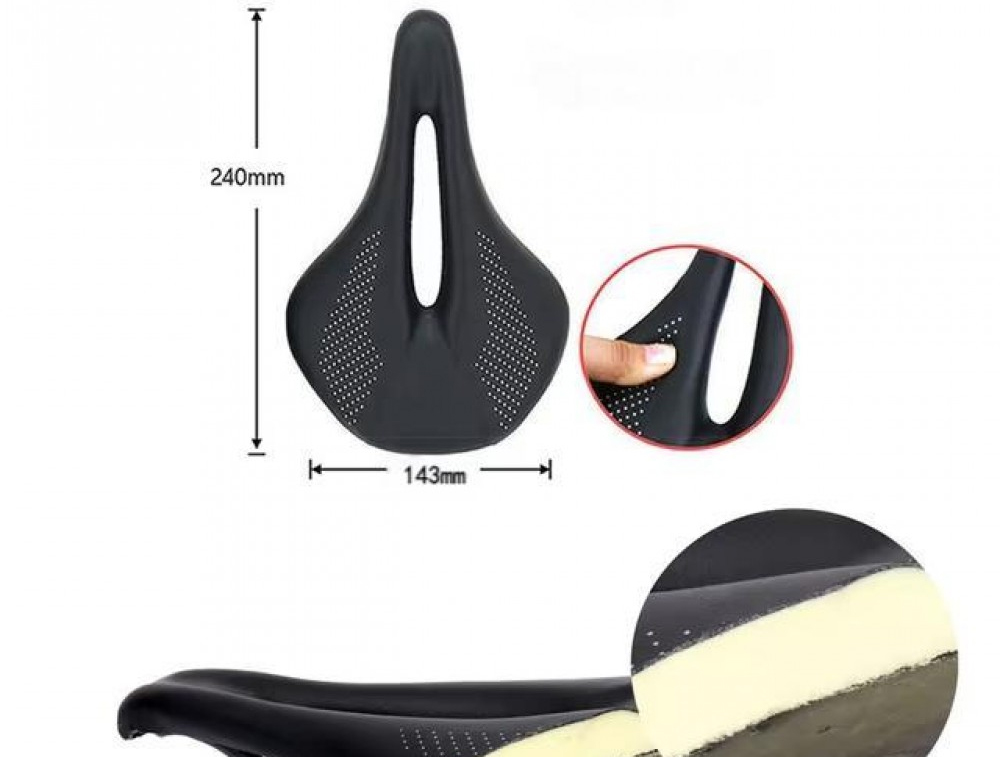
The short answer? No—not all bike saddles fit all bikes. While many saddles use universal designs, compatibility hinges on two key factors: rail type and seat post clamp design. Here's how to ensure your next saddle upgrade works seamlessly with your bike.
1. Rail Types Matter
Saddle rails—the bars beneath the seat—vary in shape and material. Common rail styles include:
Round rails: The standard for most bikes, compatible with basic clamps.
Oval/7x9mm rails: Found on performance saddles; require clamps designed for oval shapes.
Carbon rails: Lightweight but need clamps that avoid over-tightening (common in high-end posts).
Carbon saddles, like TrifoxBike’s models, often use oval or round carbon rails. Check your seat post clamp's specs to confirm compatibility.
2. Seat Post Clamp Design
Clamps come in two styles:
Single-bolt: Adjusts saddle angle and position with one bolt; works with most rails.
Twin-bolt: Offers micro-adjustability but may require specific rail shapes.
If your post has a proprietary clamp (common on aero or integrated posts), verify rail compatibility before buying.
3. Saddle Width & Shape
While width doesn't affect fit, it impacts comfort. Saddles range from narrow (130mm) for racing to wide (155mm+) for endurance. Match width to your sit bones for a pain-free ride.
Why Choose Carbon?
Carbon saddles, like TrifoxBike’s saddle, blend comfort and performance. They’re lighter than nylon or steel-railed options, reduce vibration, and often feature ergonomic cutouts for pressure relief. Just ensure your clamp supports carbon rails to avoid damage.
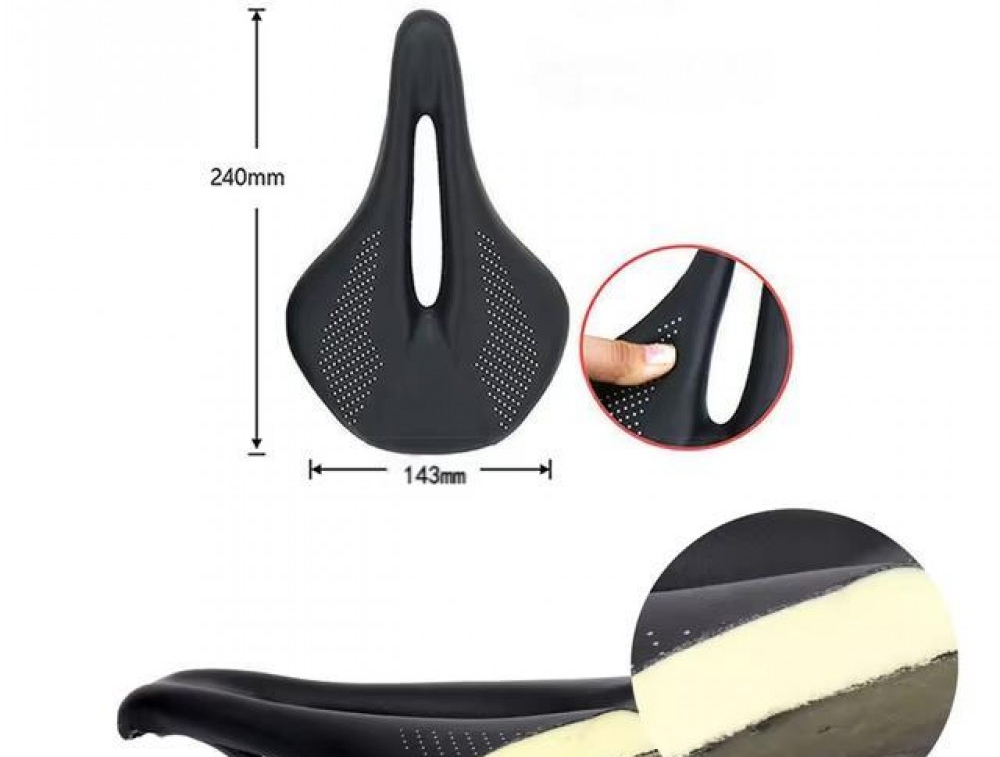
While not all saddles fit all bikes, understanding rail types and clamp designs simplifies the process. Brands like TrifoxBike make it easier with standardized, high-performance options that balance weight, durability, and price. Ready to upgrade? Swap wisely and ride comfortably!
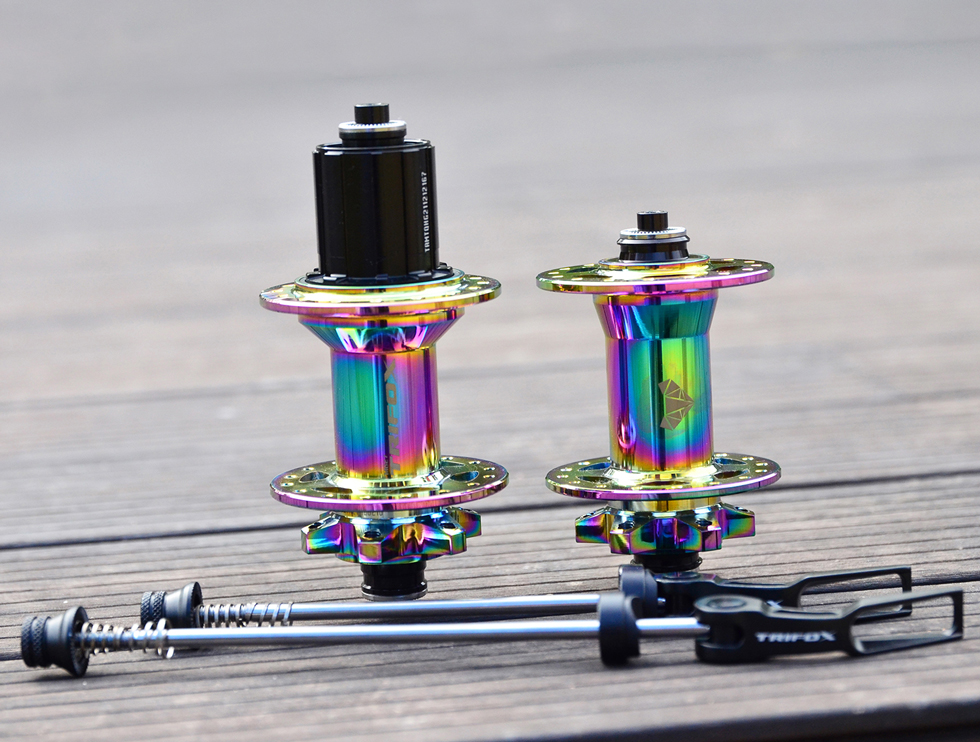
Building a high-performance bike doesn’t have to drain your savings. With strategic part selection and a focus on value, you can assemble a speedy, reliable ride without splurging on pro-level prices. The secret? Prioritize components that impact speed and durability while exploring budget-friendly brands like TrifoxBike, which offers quality parts at accessible prices. Here’s how to do it.
1. Frame: Start Smart
Skip ultra-light carbon if you’re on a budget. Aluminum frames offer stiffness and durability at a fraction of the cost. Modern alloys rival mid-tier carbon in weight and ride quality, making them ideal for performance-focused builds.
2. Groupset: Mid-Tier Wins
Shimano 105 or SRAM Rival deliver pro-level shifting precision without the premium price. Opt for mechanical over electronic shifting—it’s cheaper to maintain and nearly as responsive. Pair with a lightweight crankset and cassette for snappy acceleration.
3. Wheels: Alloy Over Carbon
Deep-section alloy wheels improve aerodynamics and are more affordable than carbon. TrifoxBike’s alloy wheel options balance weight and stiffness, ensuring efficient power transfer. Save carbon upgrades for later.
4. Finishing Kit: Keep It Simple
Handlebars, saddles, and seatposts don’t need to break the bank. TrifoxBike’s accessories page offers ergonomic, lightweight options that enhance comfort without compromising performance.
5. Prioritize Upgrades
Focus spending on parts that boost speed first: wheels, then groupset, then frame. Small savings on components like stems or bar tape add up, letting you invest where it matters.
A high-performance bike is achievable on a budget with smart choices. Brands like TrifoxBike prove you don’t need top-shelf prices for quality. By balancing cost and performance, you’ll build a machine that’s fast, reliable, and uniquely yours—without the financial strain. Ready to start? Explore TrifoxBike’s catalog and begin your build today!
























































